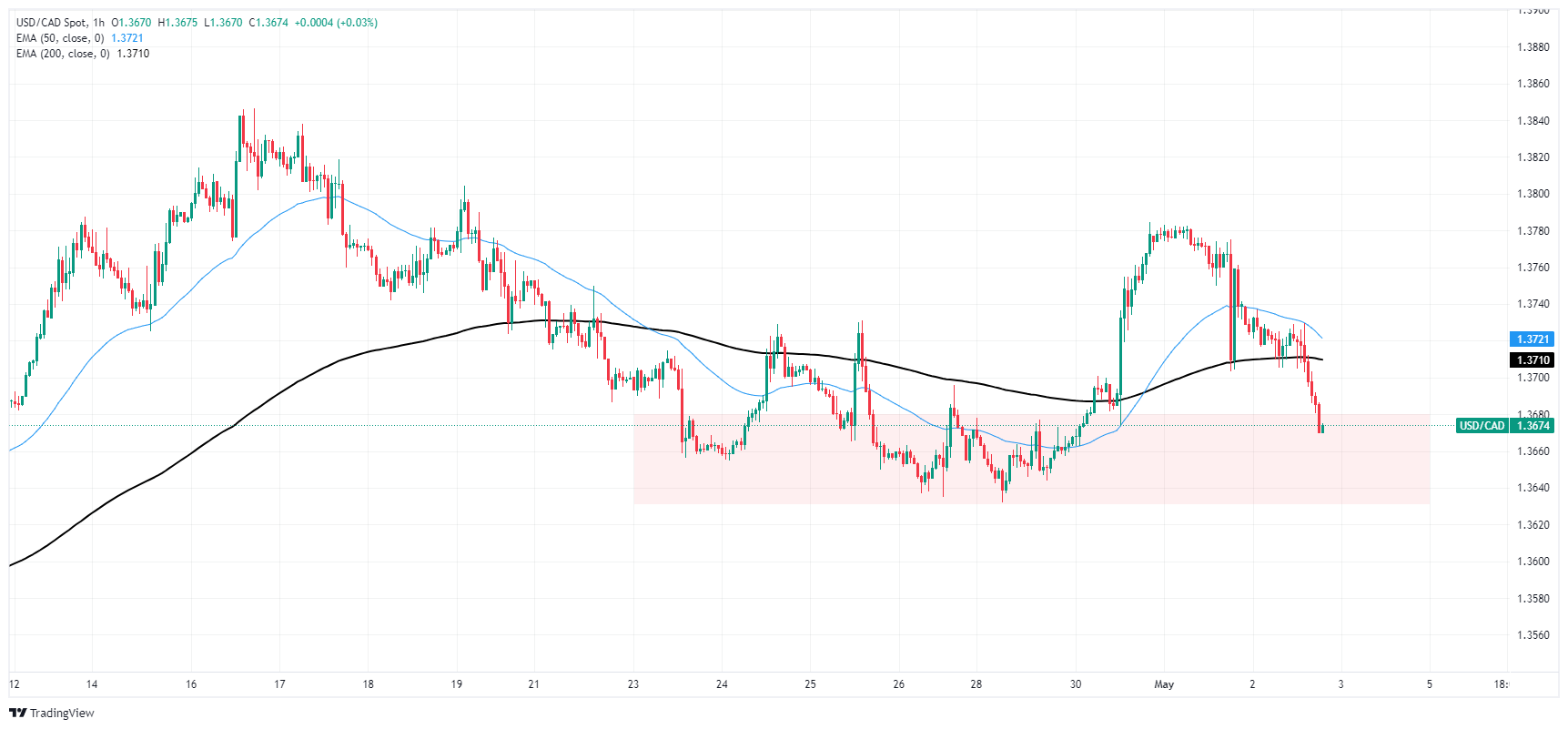Canadian Dollar gains ground as market recovers on Thursday
- Markets recovering from Wednesday’s Fed showing.
- Canada data prints low-tier on Thursday, but BoC’s Macklem makes second appearance.
- US NFP Friday looms ahead, economic calendar moderate until then.
The Canadian Dollar (CAD) is recovering ground alongside broader market risk appetite on Thursday after the US Federal Reserve (Fed) spiked investor tensions in the midweek market session. S&P Global has shifted their rate cut expectations for the year to a single quarter-point trim in December. Consensus on Fed rate cuts is increasingly inconsistent with the CME’s FedWatch Tool showing rate markets are now betting on only a 60% chance of a September rate cut.
Bank of Canada (BoC) Governor Tiff Macklem made his second appearance in as many days. The head of the Canadian central bank testified before the Canadian government’s House of Commons Standing Committee on Finance alongside BoC Senior Deputy Governor Carolyn Rodgers. Elsewhere on the data docket, Canadian International Merchandise Trade Balance figures in March unexpectedly fell but saw few ripples in broader markets.
Daily digest market movers: Canadian Dollar seeks recovery as BoC talks down rate cut expectations
- BoC Governor Macklem:
- Canadian inflation likely to stick close to 2.9% for a few months, thanks to gas prices.
- There’s a limit to how far Canadian and US rates can diverge.
- Even when rates start to come down, likely to be a pretty gradual path.
- Need to take into account any potential weakening of the CAD when considering interest rate cuts.
- Canadian International Merchandise Trade declined -2.28 billion in March versus the forecast improvement to 1.5 billion. The previous month was revised sharply lower to 480 million from 1.39 billion.
- US Q1 Unit Labor Costs rose to 4.7% QoQ versus the forecast 3.2%, yet another thorn in the side of inflation-fearing rate-cut hopefuls.
- Friday’s US Nonfarm Payrolls (NFP) labor report to be a key reading of US employment figures.
- Median market forecasts expecting a print of 243K compared to the previous month’s 12-month peak of 303K.
Canadian Dollar price today
The table below shows the percentage change of Canadian Dollar (CAD) against listed major currencies today. Canadian Dollar was the strongest against the Pound Sterling.
| USD | EUR | GBP | CAD | AUD | JPY | NZD | CHF | |
| USD | -0.10% | 0.03% | -0.35% | -0.59% | -1.69% | -0.55% | -0.69% | |
| EUR | 0.10% | 0.13% | -0.26% | -0.49% | -1.57% | -0.45% | -0.60% | |
| GBP | -0.03% | -0.12% | -0.38% | -0.62% | -1.70% | -0.60% | -0.70% | |
| CAD | 0.36% | 0.26% | 0.41% | -0.23% | -1.33% | -0.21% | -0.32% | |
| AUD | 0.58% | 0.50% | 0.62% | 0.25% | -1.07% | 0.02% | -0.09% | |
| JPY | 1.68% | 1.54% | 1.69% | 1.31% | 1.06% | 1.10% | 0.95% | |
| NZD | 0.55% | 0.48% | 0.59% | 0.20% | -0.03% | -1.16% | -0.12% | |
| CHF | 0.69% | 0.59% | 0.72% | 0.33% | 0.11% | -0.99% | 0.14% |
The heat map shows percentage changes of major currencies against each other. The base currency is picked from the left column, while the quote currency is picked from the top row. For example, if you pick the Euro from the left column and move along the horizontal line to the Japanese Yen, the percentage change displayed in the box will represent EUR (base)/JPY (quote).
Technical outlook: Canadian Dollar finds slim technical recovery
At the time of writing, the Canadian Dollar (CAD) has gained aroudn a third of a percent against the US Dollar (USD), while climbing a quarter of a percent against the Euro (EUR). The CAD has shed a percent plus a third against the Japanese Yen (JPY) on Thursday.
USD/CAD has fallen back below the 200-hour Exponential Moving Average (EMA) at 1.3709. The pair is testing chart territory below the 1.3700 handle, and is approaching a near-term demand zone between 1.3660 and 1.3630.
Despite closing bearish for eight of the last 11 trading days, and poised for another down day on Thursday, USD/CAD is only down a scant 1.08% from the last swing high into 1.3850. The pair is still trading well above the 200-day EMA at 1.3537.



